MARIANI’S
Virtual
Gourmet
AUGUST 7,
2016
NEWSLETTER
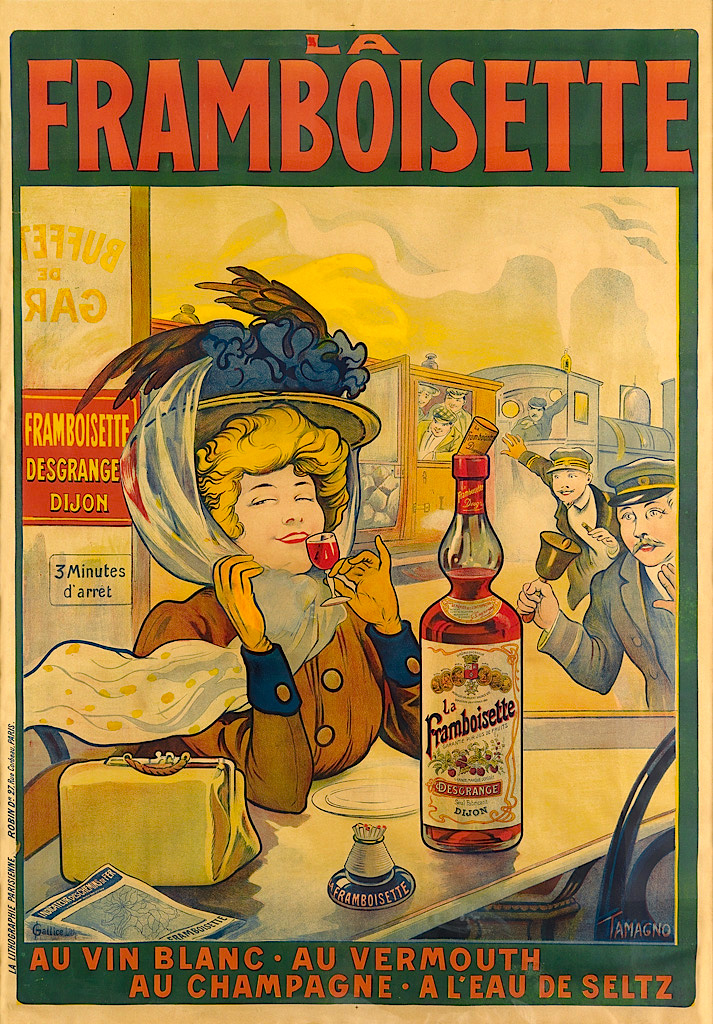
❖❖❖
IN THIS ISSUE
BACK IN OLD NAPOLI
By John Mariani
MASTER NEW ORLEANS RESTAURATEUR
TED BRENNAN
DIES AT 68
By John Mariani
NEW YORK CORNER
TAPESTRY
By John Mariani
NOTES FROM THE WINE CELLAR
SOME LATE SUMMERTIME WINES
By Geoff Kalish
❖❖❖
BACK IN OLD NAPOLI
By John Mariani
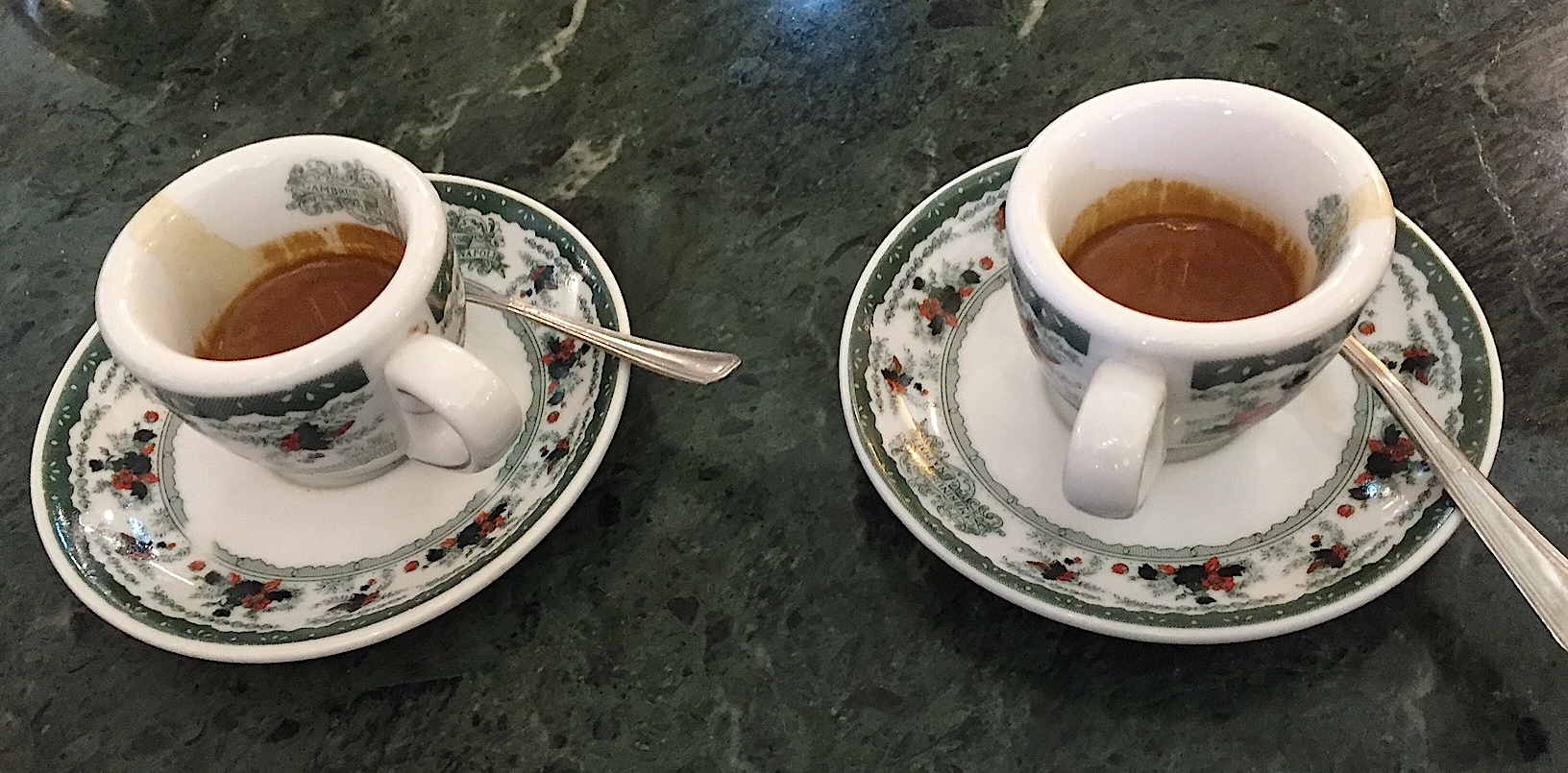
Back in the 19th
century Naples had the distinction of being
compared only with Paris for its grandeur by
Goethe, Dumas, Flaubert, and the Marquis de
Sade, even if Mark Twain—grumpy to be
quarantined for ten days in its harbor—found
that grandeur jumbled together with the most
dire poverty: “Naked boys of nine years and the
fancy-dressed children of luxury; shreds and
tatters, and brilliant uniforms; jack-ass cards
and state carriages; beggars, princes and
bishops, jostle each other in every street.”
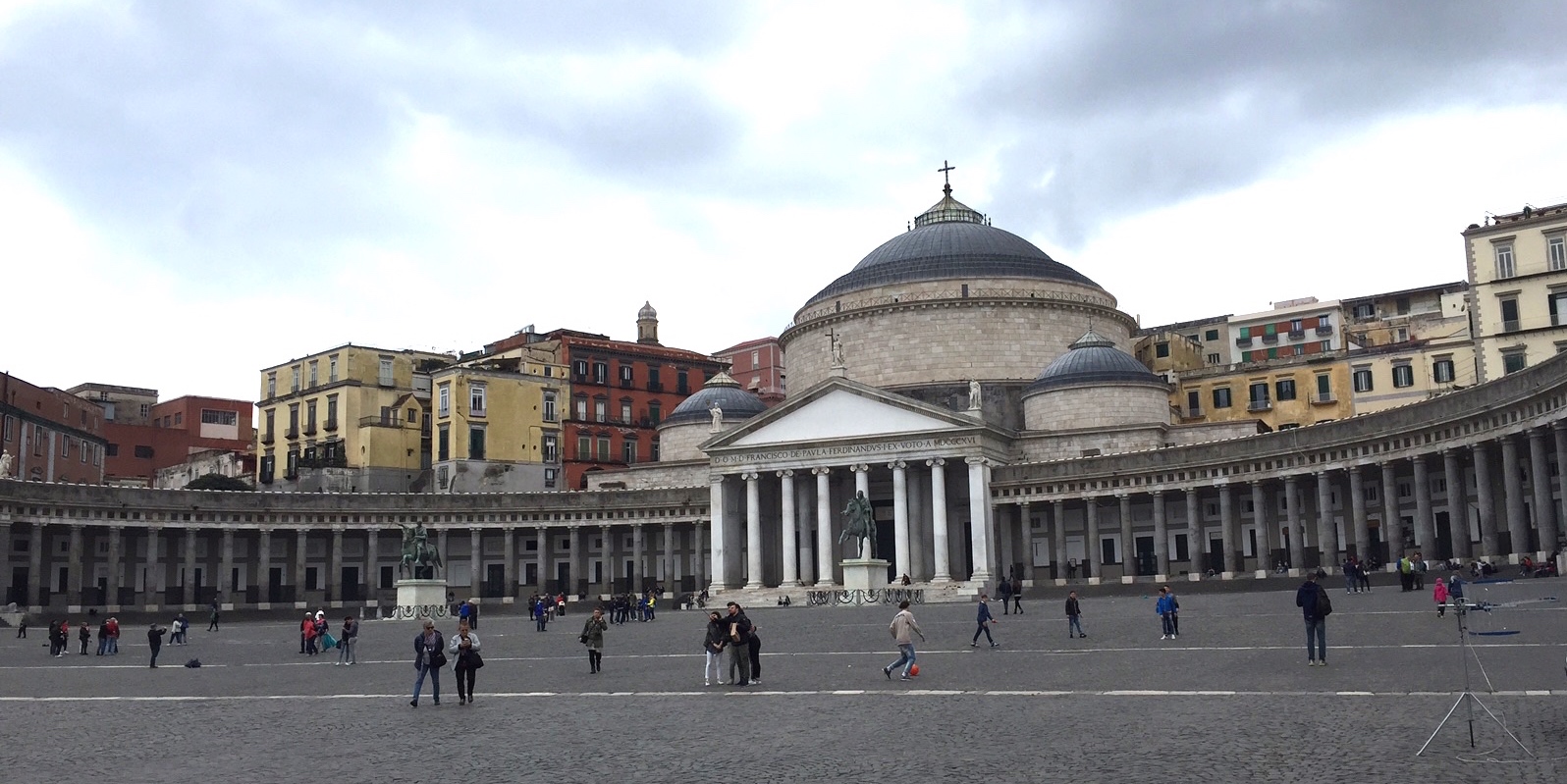 Current-day Naples
falls somewhere in between those opinions, for its
magnificent piazzas and villas keep close company
with crumbling structures propped up by nothing
more than prayer. The vast city swirls with
activity and there is hardly a moment between
eight in the morning and two a.m. when the streets
are not teeming with people, many of whom seem
always to be strolling arm-in-arm toward a caffé
or along the waterfront.
Current-day Naples
falls somewhere in between those opinions, for its
magnificent piazzas and villas keep close company
with crumbling structures propped up by nothing
more than prayer. The vast city swirls with
activity and there is hardly a moment between
eight in the morning and two a.m. when the streets
are not teeming with people, many of whom seem
always to be strolling arm-in-arm toward a caffé
or along the waterfront.
Not too many years ago Naples
was an affront to contemporary civilization, with
its most famous street, Spaccanapoli (below),
cutting through the center with sinister intent,
dark, bereft of sunlight because of so much
hanging laundry, its broken cobblestones washed
only by the rain that pours into it like a
rivulet. Hustlers, beggars and men giving tourists
the mal’occhio
leaned against graffiti-scrawled walls. Piles
of garbage were as inevitable as death and
non-payment of taxes.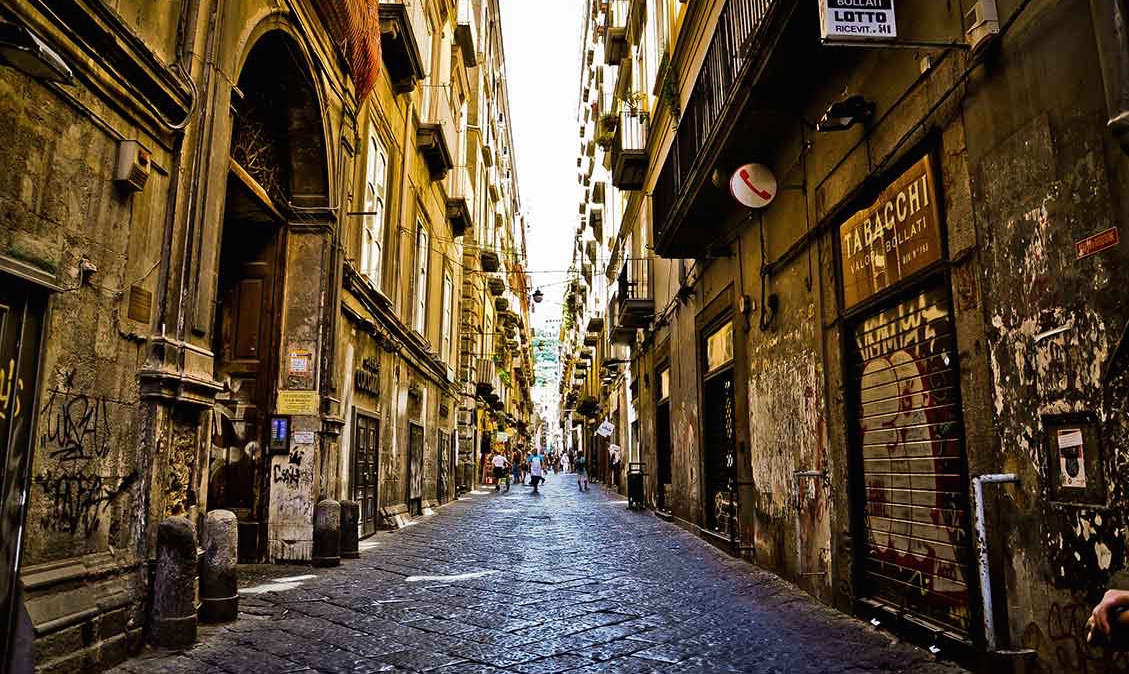
Nevertheless, and despite its
chronic underground control by the Camorra crime
mob, Naples has in recent years roused itself to
something like buoyancy, despite debilitating
unemployment and waste disposal that is still a
major issue.
But the glorious Piazza del Plebescito (above) and Royal Palace have
been restored, and the city still has some of the
finest art museums in Europe, including the vast Museo di Capodimonte,
dating to 1738, with masterpieces by Masaccio,
Mantegna, Caravaggio, Raphael and Titian.
Even Spaccanapoli has been
spruced up: the laundry is largely gone, the
street is cleaner, the low-life moved out. Ironically,
I almost miss the way it was, for now Spaccanapoli
is just another long, narrow street in Naples,
without even the distinction of being forbidding.
Thus, there is an often
sour splendor throughout Naples, not least its
sweeping bay, causing so many Neapolitan
immigrants to weep at their last sight of it as
they sailed to America at the end of the 19th
century.
One of spots easiest to find the romantic soul of
the city is at Caffé
Gambrinus (left), which,
though overrun with tourists during the season, is
a uniquely beautiful 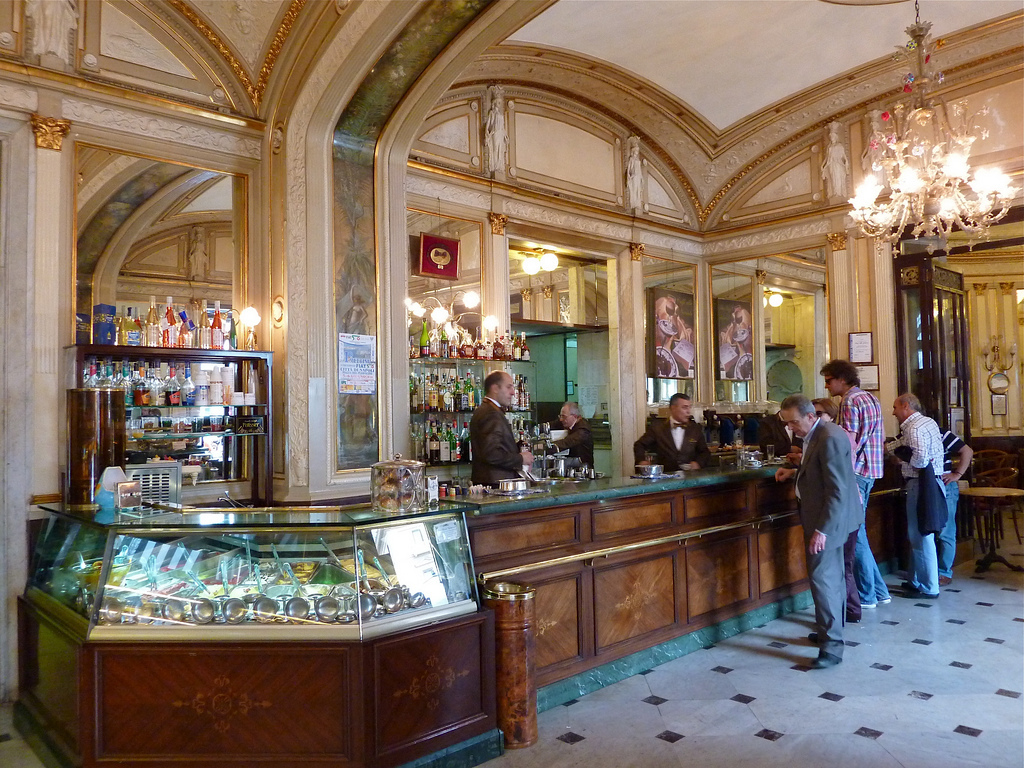 coffee and
pastry purveyor, set on the piazza in 1860. Its
architect worked in the extravagant Beaux Art
style, using the city’s finest artists and
decorators, and it soon acquired the sobriquet of
“literary coffeehouse” for the generations of
writers, artists and composers who came here for a
dazzling array of pastries, aperitifs, and its
incomparable coffee, made by master barristi
at a battery of ancient machines that hiss and
sputter like a steam train. You may also sit
outside and have cocktails while watching
the passing parade.
coffee and
pastry purveyor, set on the piazza in 1860. Its
architect worked in the extravagant Beaux Art
style, using the city’s finest artists and
decorators, and it soon acquired the sobriquet of
“literary coffeehouse” for the generations of
writers, artists and composers who came here for a
dazzling array of pastries, aperitifs, and its
incomparable coffee, made by master barristi
at a battery of ancient machines that hiss and
sputter like a steam train. You may also sit
outside and have cocktails while watching
the passing parade.
Just
around the corner is Pizzeria
Brandi (below), opened in 1760, site
where the pizza
alla margherita was truly born, the creation
of Chef Raffaele Esposito in 1889 for the visit of
the Queen Consort Margherita, using the three
colors of the new Italian flag—red tomato, white
mozzarella and green basil. Today
Brandi straddles both sides of a narrow street,
and if you go without reservations on just about
any night, you will wait an hour or so for a
table. Once
inside the brightly lighted rooms with their
commedia dell’arte murals, you’ll find everyone
from everywhere. 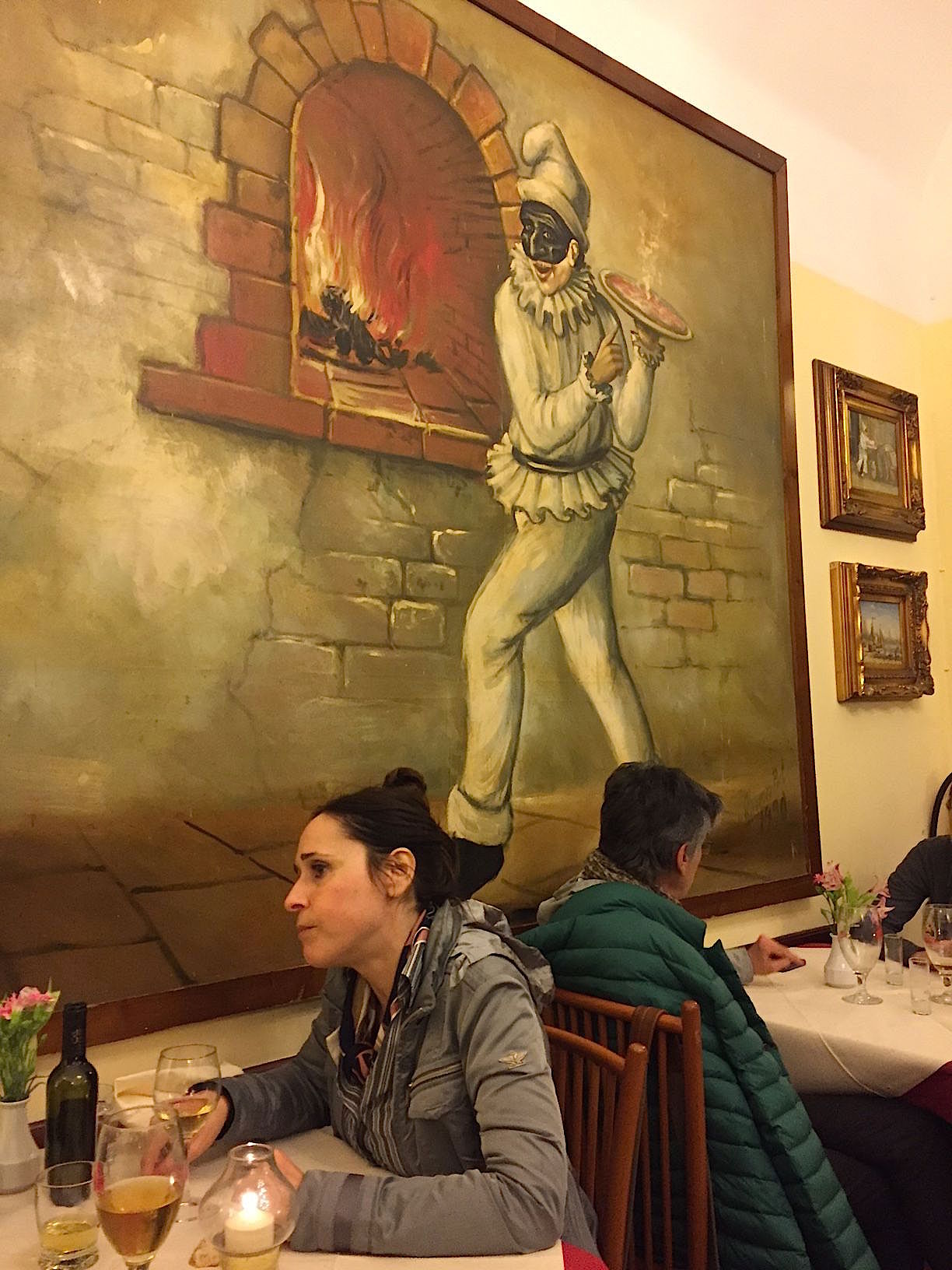 Service is
fast paced, the menu lists a lot more than just
pizzas, but I saw no tables without them.
Service is
fast paced, the menu lists a lot more than just
pizzas, but I saw no tables without them.
You must accept that this, the
original pizza, which is the style found
throughout Naples and the region, is
soft-centered, rather floppy, not crisp in the
crust. Preferences in pizza vary widely, so have
your own Brandi pizza experience and decide.
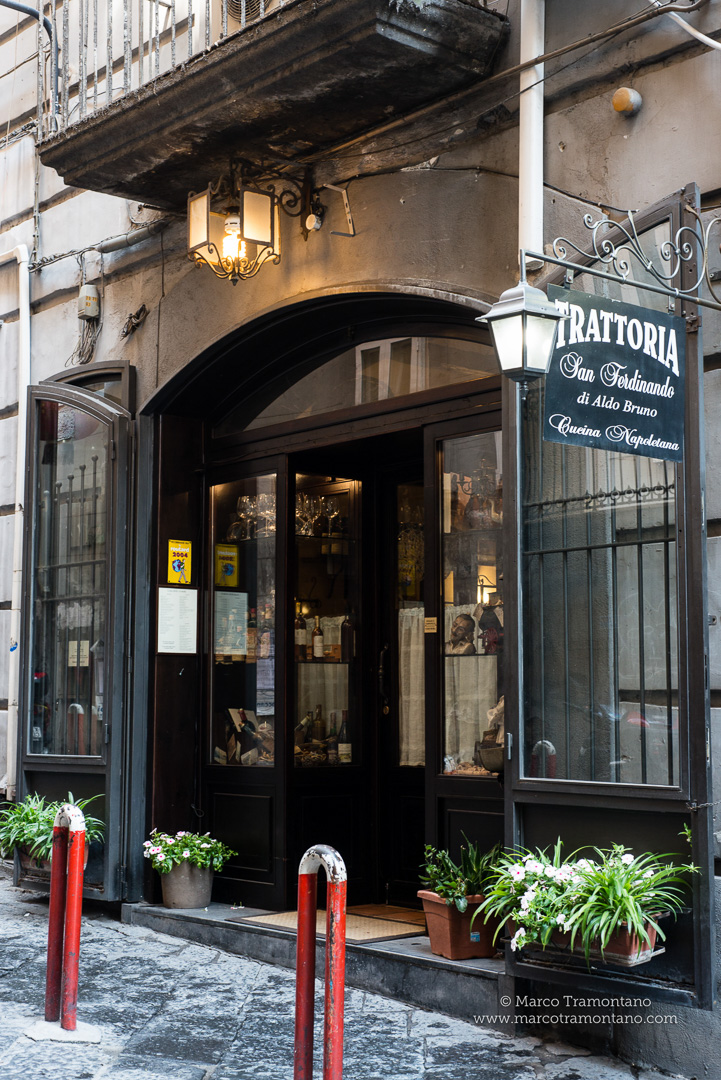 The best
meal I had in Naples was in a popular family-run Trattoria
San Ferdinando (left)
near the Royal Palace and opera house. Led by
paterfamilias Aldo Bruno, this simple trattoria is
mightily committed to traditional Neapolitan fare
and you can tell from the first bite that
everything on the menu has been refined over many
years to show the family’s enduring expertise. Everybody
who works here is related and you’ll feel it in
the warmth of service and the suggestions made at
your table for a wine or special of the day.
The best
meal I had in Naples was in a popular family-run Trattoria
San Ferdinando (left)
near the Royal Palace and opera house. Led by
paterfamilias Aldo Bruno, this simple trattoria is
mightily committed to traditional Neapolitan fare
and you can tell from the first bite that
everything on the menu has been refined over many
years to show the family’s enduring expertise. Everybody
who works here is related and you’ll feel it in
the warmth of service and the suggestions made at
your table for a wine or special of the day.
Naples claims to make the best
buffalo milk mozzarella in the South, and it’s
hard to argue with the luscious, pliable version
at San Ferdinando, served with tomatoes and sprigs
of basil. You might begin with a sauté of seafood
or a delicate carpaccio of sea bass with citrus
fruits. There’s a wonderfully hearty pasta e
fagioli here. I loved the linguine with crab
and the fresh fettuccine with mussels and
pecorino.
All the pastas hit their mark: Rigatoni
comes with eggplant, green peppers and provola
cheese; risotto with meaty morsels of merluzzo (hake)
and
herbs; bucatini
is spiked with a black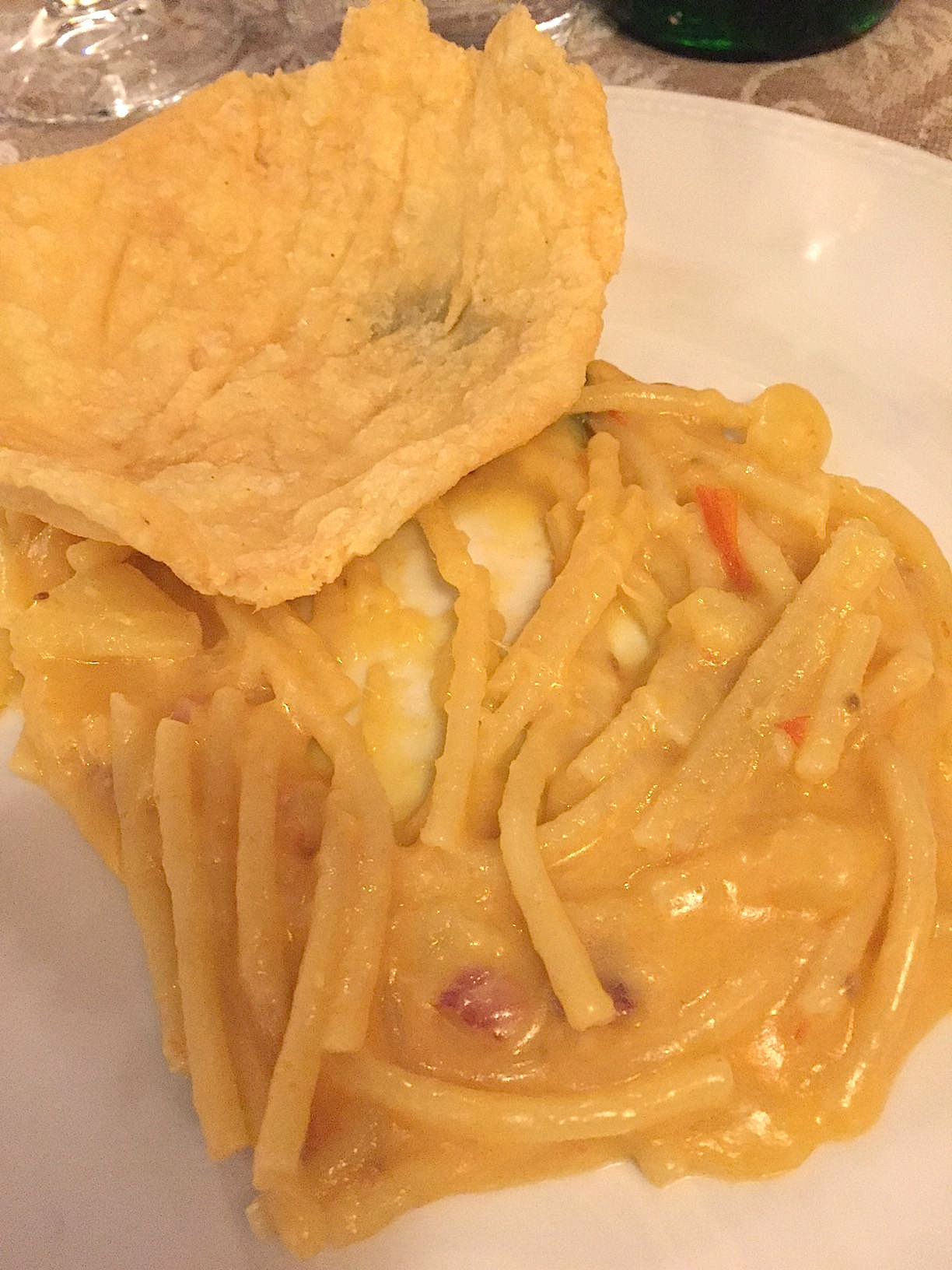 pepper
sauce; the specialty here is pasta and potatoes
with provola cheese
made into a marvelously chewy crisp (right).
Ziti alla
Genovese with crumbled meat and soft, caramelized
onions shouldn’t be missed.
pepper
sauce; the specialty here is pasta and potatoes
with provola cheese
made into a marvelously chewy crisp (right).
Ziti alla
Genovese with crumbled meat and soft, caramelized
onions shouldn’t be missed.
Actually
these dishes are not common in Naples, but they
all taste of the regional cucina di Campania
and its rich food culture. After
all, this is where the tomato was first imported
from the Americas in the 17th century, and it took
nearly three hundred years for the rest of Italy
to catch on to how delicious it was.
So, too, are San
Ferdinando’s stuffed cuttlefish, and the beef
meatballs Neapolitan style, which you may compare
with all those meatball-and-spaghetti dishes
standard in Italian-America restaurants.
The Brunos are justifiably proud of their
extensive wine list, riddled with the wines of the
region, all at very good prices, as is their menu,
with pastas around 8€, meat and seafood 9-14€.
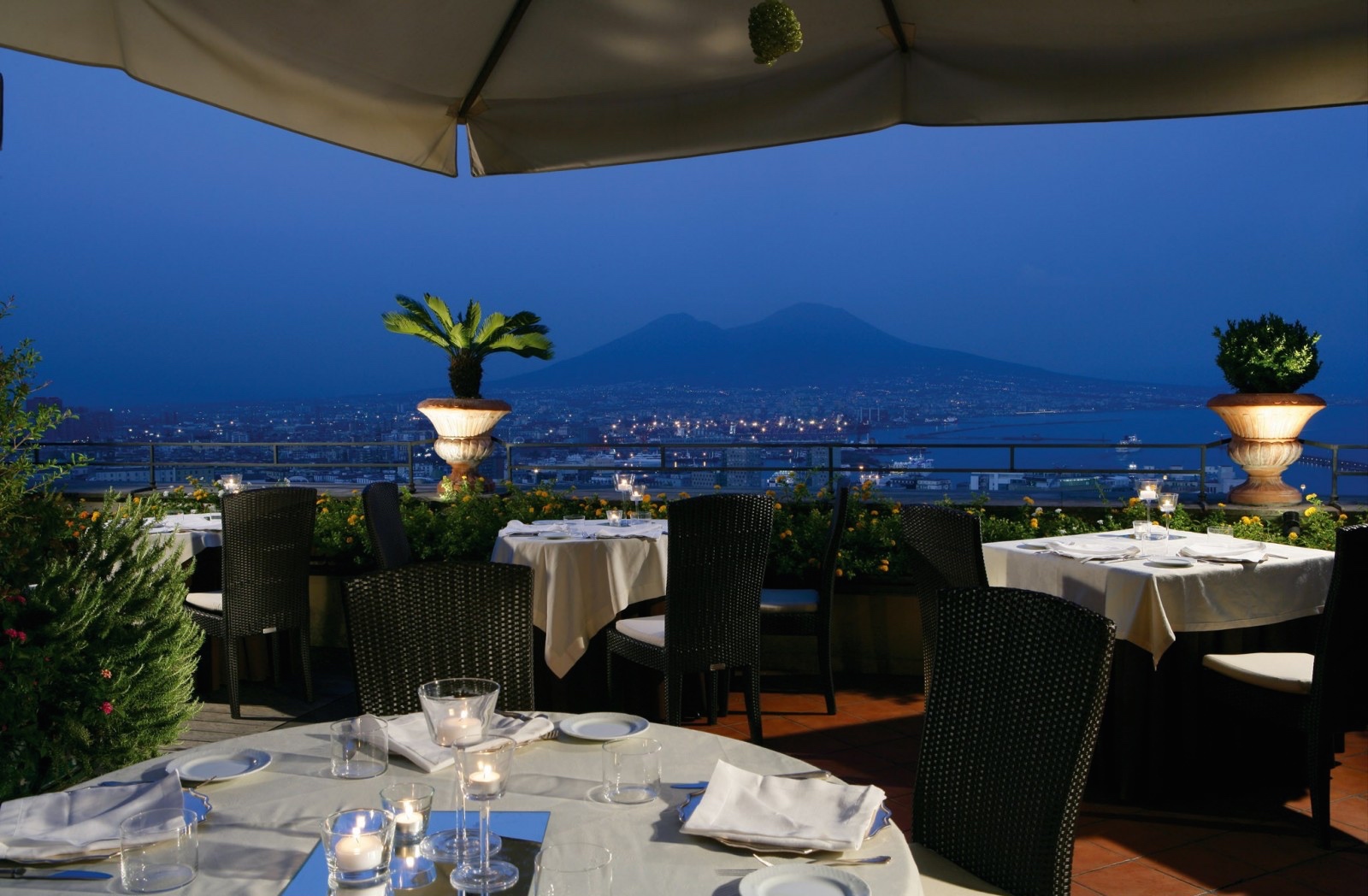 For
la cucina
more experimental, I dined at La Terrazza dei
Barbanti in the hillside Hotel San
Francisco al Monte (left), a comfortable,
serviceable place to stay well above the noise and
traffic of the center of the city and several
blocks from a funicular that takes you right down
to the Piazza del Plebiscito. The restaurant
serves breakfast, lunch and dinner, and Chef Enzo
Spingone serves up some of the city’s most
inventive cuisine, in a modern glassed-in room
overlooking the bay. Here you may begin simply,
with a carpaccio of boiled pig’s trotters and
snout dressed with salt and lemon juice, served
with marinated celery, arugula and pink grapefruit
(13€). Paccheri
with clams and bright zucchini flowers zesty with
lemon (16€) or linguinette
pasta with langoustine, a subtle dose of garlic,
and broccoli (18€). Bonito is marinated in cider
and served with a corn salad (18€), while old
fashioned eggplant parmigiana is rendered new with
chutney and basil (14€).
For
la cucina
more experimental, I dined at La Terrazza dei
Barbanti in the hillside Hotel San
Francisco al Monte (left), a comfortable,
serviceable place to stay well above the noise and
traffic of the center of the city and several
blocks from a funicular that takes you right down
to the Piazza del Plebiscito. The restaurant
serves breakfast, lunch and dinner, and Chef Enzo
Spingone serves up some of the city’s most
inventive cuisine, in a modern glassed-in room
overlooking the bay. Here you may begin simply,
with a carpaccio of boiled pig’s trotters and
snout dressed with salt and lemon juice, served
with marinated celery, arugula and pink grapefruit
(13€). Paccheri
with clams and bright zucchini flowers zesty with
lemon (16€) or linguinette
pasta with langoustine, a subtle dose of garlic,
and broccoli (18€). Bonito is marinated in cider
and served with a corn salad (18€), while old
fashioned eggplant parmigiana is rendered new with
chutney and basil (14€).
Desserts are
lavish and lovely to look at, like the ricotta and
pear cream with chocolate ice cream (9€); green
apple sorbet soaked in an amaro liqueur (7€); and
a Neapolitan baba spongecake with crème anglaise
and black cherry ice cream (8€). The wine list is
quite good, though pricey for Naples.
❖❖❖
R.I.P.: MASTER NEW ORLEANS RESTAURATEUR
TED BRENNAN DIES AT 68
By
John Mariani
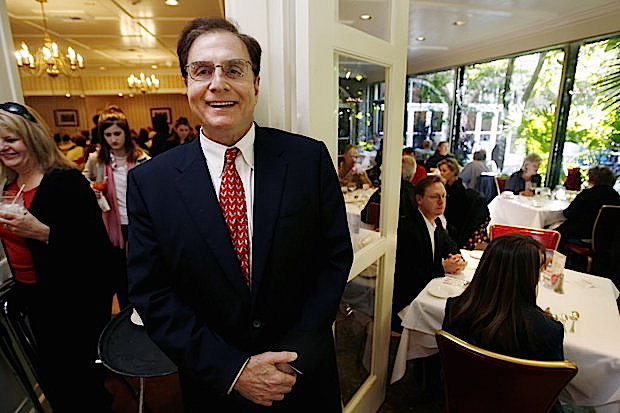 Even
if you met Ted Brennan for the first time at
Brennan’s restaurant on Royal
Street in the French Quarter, he’d always have a
look of mild surprise on his
face when he’d say, ‘Well, how y’all
doin’
tonight?” as if he hadn’t seen you in a while
and was relieved and happy
you came back.
Even
if you met Ted Brennan for the first time at
Brennan’s restaurant on Royal
Street in the French Quarter, he’d always have a
look of mild surprise on his
face when he’d say, ‘Well, how y’all
doin’
tonight?” as if he hadn’t seen you in a while
and was relieved and happy
you came back.
Tall,
bespectacled, always in a dark
suit, crisp white shirt, silk tie, and shined
brogues, Ted was the upfront face
of Brennan’s, the schmoozer, the one who asked if
your Martini was dry enough,
if you’d tried the gumbo, and if the fish was
cooked to your liking.
Photo by Matt
Rose
While
his brother Jimmy (below, right, with portrait of their
father Owen Brennan) tended Brennan’s
extraordinary wine cellar with over-the-top
passion and his brother Pip (below, left)
kept the back of the house working smoothly, Ted
was the one who knew everyone in town, the names
of all the concierges at all
the hotels, where to buy a Panama hat, and made
you feel that you were
getting the best table and the
best waiter that night. Make a
minor complaint and he’d take it as if the roof
had fallen in, then fix it. I
always assumed his middle name was
Lagniappe. He was what used to be called a
hail fellow, well met.
Ted
Brennan died August 3 week at the age of 68, just
a month shy of opening a namesake
restaurant in Decatur. I won’t go
through the well-hashed history of how the various
sides of the extended
Brennan family fought their proprietary battles
over the last fifty years or
how the three brothers finally lost control of
Brennan’s three years back. You’ll
hear a hundred stories.
All
I want to remember abut Ted was his consummate
knack for New Orleans-style
hospitality, for knowing when to turn up the
drawl, sensing just how much
flattery he could use on a guest’s wife, and
cruising the many dining rooms
each night trying to see if there was anything
more he could do to make his
friends happy.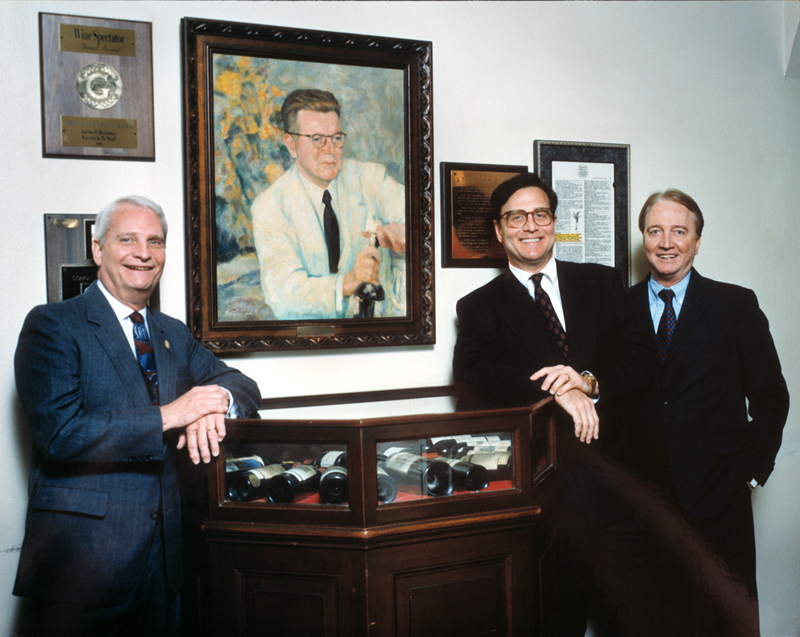
“Lemme
send you something from the chef.” “Where’d y’all
have lunch?” “Y’know who’s
playing the best jazz in the city tonight?” “The
crawfish are as fat as I’ve
ever seen them this year.” The one thing he never
brought up was politics.
When
he spoke there was usually a pause between the
first part of a sentence and the
last, as if setting you up for a punch line: “You
want great Cajun food? . . .
Then you’re in the wrong
town.”
“You tried to get into Galatoire’s on a Friday?
. . . Might as well as beg
for Superdome seats on the fifty yard line.” “I promise you the Saints’ll
go all the way this season. .
. because
they all eat here
and told me so.”
Though
I
never considered myself a Brennan’s insider, I got
to know Ted well enough to
banter with him, not least telling him year after
year that his wineglasses
were cheap, and year after year he’d always
respond, “If you knew how many we
break. . . you wouldn’t say that.”
He’d
give me a slap on the back but never buttered me
up. He’d always avoid saying
anything unkind about the other
members of the family. And he
always told me he would personally take me to eat
at Mosca’s.
Mosca’s
is a no-frill New Orleans-style Italian restaurant
way the hell out in
Waggaman, Louisiana, that I once ate at and came
away not getting what all the fuss
was about the food or the place. Ted
would shake his head and say, “John”—which
sounded like “Jawn”—“You just gotta go with me. Next
time you’re in town we’ll make a
date. .
. . I’ll show you Mosca’s
the way it really
is.”
Somehow
Ted
never got around to taking me to Mosca’s, and now,
well, there won’t be a
next time. But
I know I will never
think of my good times in New Orleans without
thinking of Ted and how he’d
always give me that look when I came through the
door, as if to say, “Well,
where y’all been. . . and what took you so
long.”
❖❖❖
By John Mariani
Photos by Sal D'Aglia
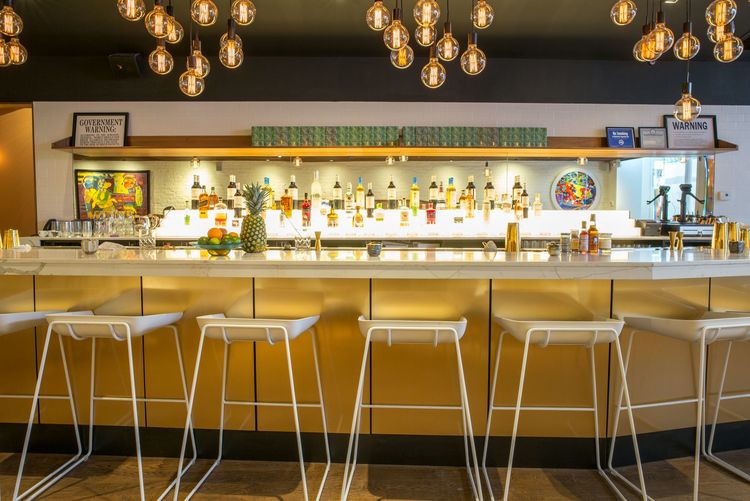 TAPESTRY
TAPESTRY
60 Greenwich Avenue (near Perry Street)
212-373-8900
tapestryrestaurant.com
As I’ve had several
occasions to learn recently, Indian cuisine is
changing rapidly for the better, both in the
preparation of traditional dishes and in the
creation of new ones that show global influences
of the vast sub-continent’s food culture.
Of this evolution Delhi-born
Suvir Saran (below)
is well aware, for he has been in the vanguard of
the movement, having been chef of Devi (the
first Indian restaurant to be granted a Michelin
star),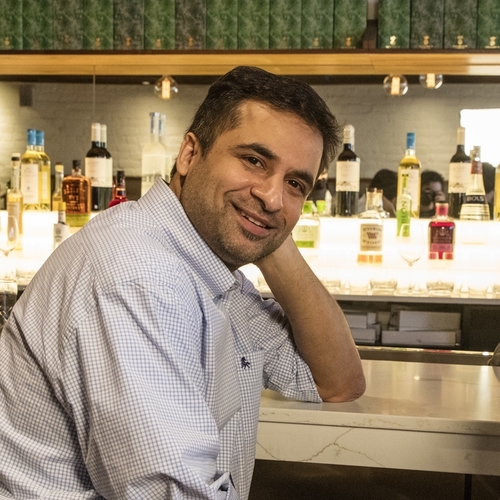 published three
cookbooks, and is now chairman of the Asian
Culinary Studies Department of the Culinary
Institute of America. All his worldwide
experience is at play at the new Tapestry
restaurant in the West Village, which he co-owns
with Roni Mazumdar.
published three
cookbooks, and is now chairman of the Asian
Culinary Studies Department of the Culinary
Institute of America. All his worldwide
experience is at play at the new Tapestry
restaurant in the West Village, which he co-owns
with Roni Mazumdar.
It’s a good-looking long room
made up of white brick walls, charcoal ceiling
with hanging exposed bulbs, oak wood floors and
tables, some latticework, the now requisite subway
tiles, and a snazzy marble bar backed by a
mirror—hard surfaces all, which means that
Tapestry can get very loud after eight o’clock. (Some
actual tapestries on the walls would help a great
deal.)
Saran says he’s “not trying to
be particularly avant
garde,” referring instead to his cooking as
"comfort food from around the world,” based on
his own favorite taste memories. "Comfort
changes based on the national border that you're
in,” he says. “Food brings us together." And
much of the food he serves comes from his own
farm in Hebron, N.Y., whence he gets his eggs 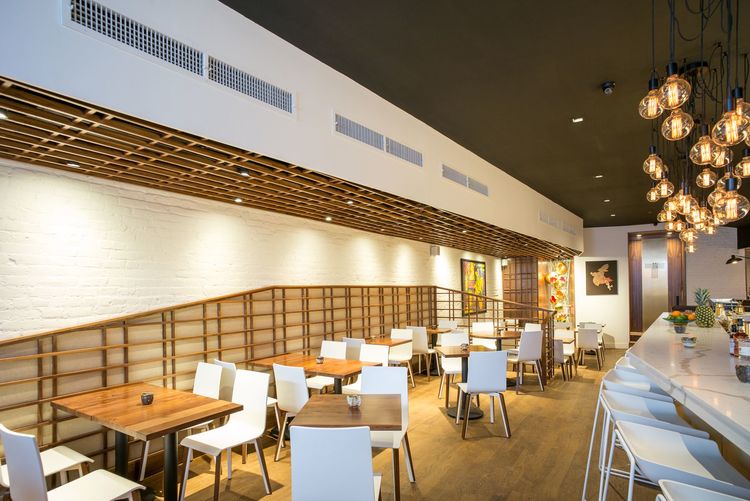 and, soon, his pigs. His
chef de cuisine is Joel Corona, a Mexican from
California, his executive sous chef is Aarti
Mehta, from Mumbai; and the pastry chef is
Crystal Hanks.
and, soon, his pigs. His
chef de cuisine is Joel Corona, a Mexican from
California, his executive sous chef is Aarti
Mehta, from Mumbai; and the pastry chef is
Crystal Hanks.
You
might well expect that Tapestry would feature
small plates for the table, each of them
distinctive for flavors that are never muddied,
like Brussels
sprouts chaat
with tamarind and mint chutneys, yogurt, and a
black salt called kaala namak
($14). Here
bruschetta
gets the addition of pomegranate, cilantro,
onions, mustard oil, and Parmesan cheese ($13),
while tamarind-glazed chicken wings with a
basil-mint yogurt sauce wonderfully evoke India
($18). More
unexpected is the chicken and goose liver pâté (below) with
kumquats, grapefruit, thyme and Sauternes on
buttered toast ($15). So, too, smooth Rabbit
terrine with fennel, pistachios, Pernod, brioche
toast points and garden greens and flowers called
“rabbit grazings” ($23) was much closer to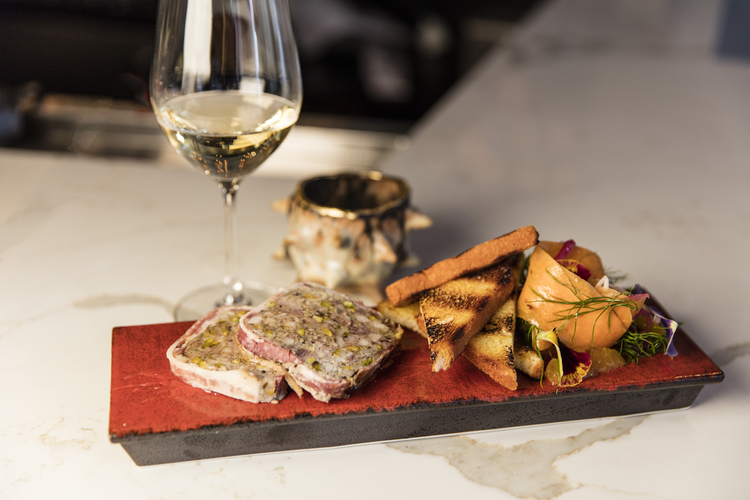 the east than the west.
the east than the west.
The one dish not to be missed
is the crisp Masala fried chicken (below) with a
crunchy peanut slaw, well-seasoned potato aloo bharta,
and tangy tomato chutney ($26). The honey-glazed
pork chop with roasted cauliflower, onions, and
caramelized apples ($32) is another good choice,
and with well-fatted, sweet-sour-spicy Japanese
wagyu skirt steak come spiced greens, kumquats,
nuts and falooda
noodles ($45). Every
dish has its specific aroma, tenderness and
complexity without ever getting overpowered by
chile heat.
Salt, sweet, bitter, and sour spin ripples
of flavor in every dish.
I love seeing Pavlova meringue
cake on a dessert menu, here with mango, summer berries
and ginger cream ($14), and I am incapable of
pushing away Tapestry’s Sticky Toffee Pudding with
salted caramel ice cream and brandy snap
basket.
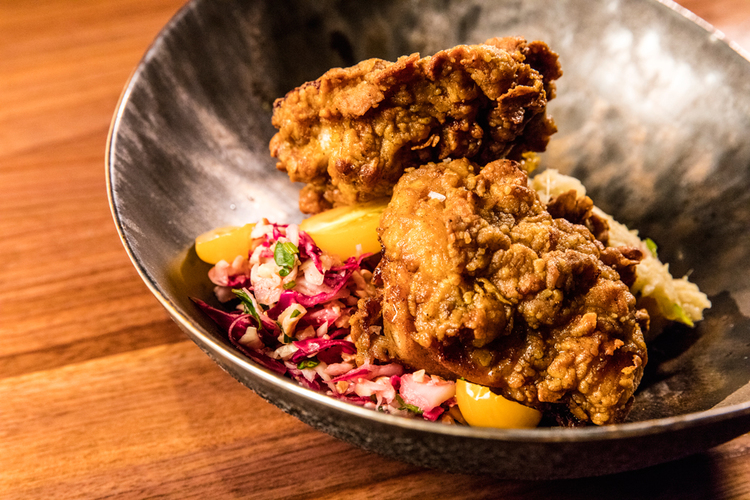 Tapestry has a gregarious
drinks director who has put together an exotic
cocktail list and a modest wine list suited to
this kind of difficult-to-match cuisine, with all
bottlings offered by the glass or bottle. Mark-ups
are not what I’d call easy on the wallet—Manifesto
Sauvignon Blanc goes for $38, about $13 in a wine
shop, though Alphonse Mellot La Moussiére 2014 at
$66 is not unreasonable—but so many are under $50
that they are affordable.
Tapestry has a gregarious
drinks director who has put together an exotic
cocktail list and a modest wine list suited to
this kind of difficult-to-match cuisine, with all
bottlings offered by the glass or bottle. Mark-ups
are not what I’d call easy on the wallet—Manifesto
Sauvignon Blanc goes for $38, about $13 in a wine
shop, though Alphonse Mellot La Moussiére 2014 at
$66 is not unreasonable—but so many are under $50
that they are affordable.
Suvir Saran
seems to have hit a delicious balance of the old,
the new, the savory and the sweet throughout his
menu, both elevating Indian cuisine without losing
the soulfulness of it and showing how its flavors
deserve a larger role in international gastronomy.
Open nightly for dinner.
❖❖❖
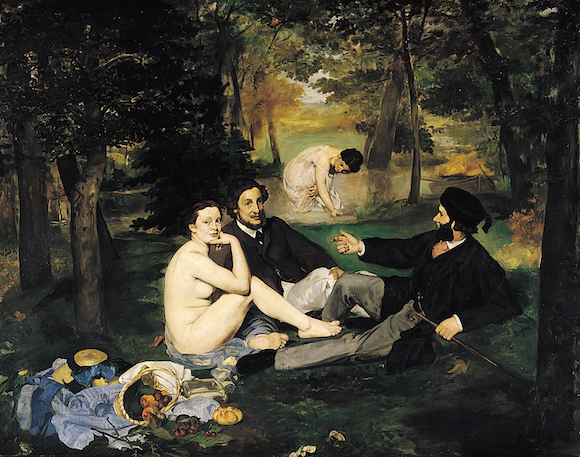
SOME LATE SUMMERTIME WINES
By Geoff Kalish
With the
summertime rosé craze in full mid-summer
swing, a number of excellent, well-priced
whites and reds perfect to accompany the
fare of the season seem to have been lost
in the ongoing, seemingly mindless parade
of fruity pink quaffs. That’s not to say
that rosés are without merit. In fact,
they’re perfect alone as aperitifs or when
mated with hors d’oeuvres showing mellow
flavors like hummus with pita crisps, mild
cheeses and chips and with bland dip.
However, in my experience, the fruity
bouquet and taste of even some of the most
highly touted rosés are often overwhelmed
by the zesty flavors of classic warm
weather cuisine, like gazpacho, barbecued
ribs, hot dogs, and grilled chicken with
barbecue sauce.
WHITES
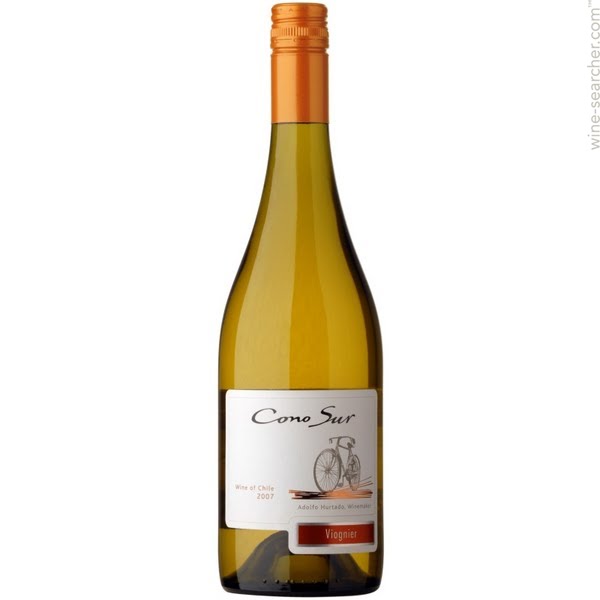 2015 Cono
Sur Bicicleta Viognier (Chile) ($10)
2015 Cono
Sur Bicicleta Viognier (Chile) ($10)
Made
from hand-harvested grapes grown in the Colchagua
Valley (noted for cool nights and foggy mornings),
this wine was aged in stainless steel tanks for 6
months following fermentation. It shows a fruity
bouquet and taste of peaches and ripe apricots,
with a lively acidity in its finish – perfect to
pair with grilled shrimp, spicy chicken wings and
even salsa with chips.
2013
Doca delle Chauvale Vermentina (Italy) ($10)
Grapes
for this easy-drinking wine hailed from vineyards
located only 6 miles from the Tuscan seaside.
Following 15 days of temperature-controlled
fermentation, the wine was aged in stainless steel
tanks for 5 months. It has a floral bouquet with
an uncomplicated taste of pears and earthy spice.
Try it with grilled fish, especially tuna and
swordfish, and soft-shelled crabs.
2014
Jordan Chardonnay (Alexander Valley, California)
($32)
For
this wine night-harvested Russian River Valley
grapes were fermented, then aged in French oak
barrels. Reminiscent of a French
Corton-Charlemagne, the wine exhibits an elegant
bouquet and taste of vanilla, citrus and exotic
spice, with a long, smooth memorable finish. Mate
it with delicate seafare like grilled branzino or
brook trout as well as lobster.
REDS
2015
Borsao Garnacha (Spain) ($9)
One of
the best red wine bargains around—especially for
warm weather enjoyment—this wine was produced from
hand-harvested grapes (85% Grenache. 15%
Tempranillo) grown at altitudes over 1,000 feet
above sea level in northern Spain (Moncayo
Mountains and terraces above the Erbo River).
Following temperature-controlled fermentation, the
wine was aged in a combination of new and used oak
before bottling. It shows a bouquet and taste of
ripe cherries and blueberries, with hints of
vanilla and toast in its finish and mates
harmoniously with a wide range of fare, from
grilled vegetables to hamburgers and skirt steak,
to pizza and pasta with red sauce. 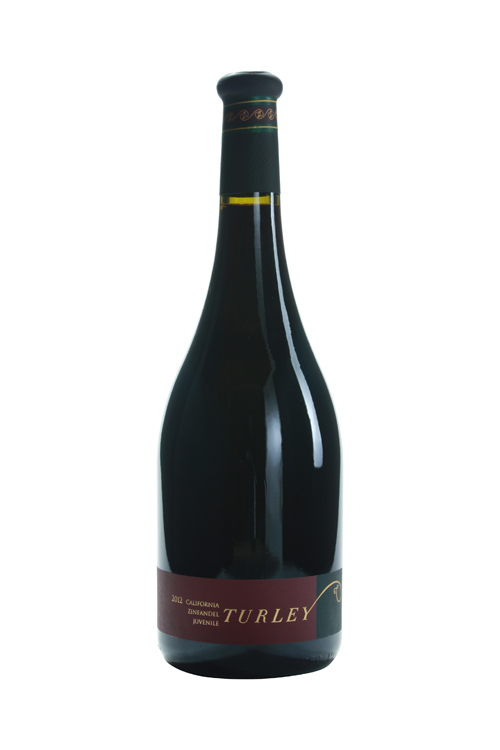
2014
Cono Sur Bicicleta Merlot (Chile) ($10)
This
85% Merlot wine is another bargain Chilean red,
more than a cut above the many one-dimensional,
inexpensively priced Cabernets from this country
making their way north. (Of interest, the
designation “bicicleta” originates from the
bicycles used to navigate the vineyards, and pays
homage to the efforts of the workers.) Grapes for
this wine hailed from vineyards that experience
warm days and cool nights, with aging of the wine
for 8 months in stainless steel tanks following
fermentation. It has a bouquet and easy-drinking
taste of cherries and ripe raspberries with hints
of chocolate in its finish. Enjoy it with grilled
veal and pork chops as well as blue-veined
cheeses.
2014
Turley Juvenile Zinfandel (California) ($30)
With
Zinfandel grapes culled from young vines (6-25
years old) across California, its intense cherry
and mint bouquet and flavors are perfectly tamed
by the protein in much of the more robust fare of
the season, like barbecued ribs, grilled
rosemary-garlic infused lamb and black pepper
encrusted grilled tuna. It also mates well with
grilled porterhouse and flank steaks.

1. CONCENTRATE ON THE
BUZZ, BUZZ, BUZZ
2. USE SUPERLATIVES TO DESCRIBE EVERYTHING
3. MAKE UP WORDS LIKE "BRUNCHY BRUNCH."
 Lines from Bon Appetit's "50 Best New
Restaurants" Candidates (August, 2016).
Lines from Bon Appetit's "50 Best New
Restaurants" Candidates (August, 2016).
“Toto,
we’re not at Peter Luger anymore.”
“The
red 1972 Citroën parked outside is the same
make of car as the one in which Charles de
Gaulle's assassination was attempted. Just,
you know, FYI.”
“For
the least brunchy brunch ever, hit Staplehouse
for Sunday `lunch.’”
“The
hotel's mini bars are stocked with the best
peanuts on the planet, from the First United
Methodist Church in Mount Olive, North
Carolina.”
“Why
does it feel like every chef we know is moving
to Charleston, South Carolina?”
“If
it’s a nice night, head upstairs for sweeping
views of the city and a hickory-smoked ‘carrot
dog.’"
“There's
plenty
of merch to take home with you to remember the
experience by; our favorite tee bears the
restaurant's slogan, `Smoked While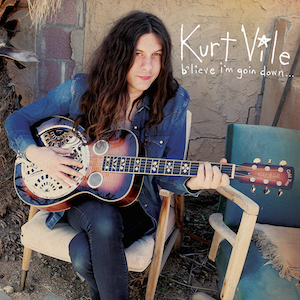 You Sleep.’”
You Sleep.’”
“We
know, we know: You were going to Fishtown
before Fishtown was cool. You saw Kurt Vile
play at Johnny Brenda’s—we got it.”
“Before
long you have a taco in your left hand and
spoon in your right, and you can’t think of a
single place you’d rather be.”
“Order
a foamy glass of Trabanco cider, dispensed
from a two-foot-tall custom tap shaped like an
arm.
“The
menu at Benjamin Sukle's seafood-centric,
Italian-American restaurant checks
every one of our `foods we want to eat right
now’ boxes.”
 “From the minute we walked into
this West Village gem, we were as starry-eyed
as Amélie.”
“From the minute we walked into
this West Village gem, we were as starry-eyed
as Amélie.”
“Juliet
is what you make of it. Live in Somerville?
It’s your (way more indie) Starbucks, a place
you pop into every morning for an iced matcha
and two breakfast tacos to go. (Breakfast
tacos in Boston?! This is the magic that
happens when the co-owner, Katrina Jazayeri,
grew up in Austin.)
TRAVEL WRITING 101:
TRY NOT TO SOUND LIKE 
A PERSON YOUR READERS
WOULD DESPISE
“Summer as a
verb? Vom. It’s the same thing every September. I want
to get T-shirts made that say, `Mine was fine, how was
yours?’ Enough with the torturous, default,
travel-flaunting small talk; I already saw on your
Insta that you flew privately to Capri, then hopped
onto Valentino’s yacht. So shut up about it. When
people smarmily ask me where I summered, I blithely
respond, `Durito!’ They follow up with wonder,
assuming it must be the new `it' island floating in
some far-flung time zone, asking, `Oh, yes... isn’t
there’s a new Aman there?’ I correct them: `Nope.
Durito is where I live in New York City: Down Under
Roosevelt Island Tram Overpass. That’s where I
summer.’ That shuts them up. They bite their lower lip
and give me a look of pity, like I spent Julaugust
opening fire hydrants with a wrench and dancing in the
stream of water, or joining in a rat-conga line down
Madison, kicking tumbleweeds out of my way with my
not-Louboutins.”—Jill Kargman, “Where Did YOU
Summer?”--Beach
Modern Luxury Magazine.
Any of John Mariani's books below may be ordered from amazon.com.
 The
Hound in Heaven (21st Century Lion Books)
is a novella, and for anyone who loves dogs,
Christmas, romance, inspiration, even the supernatural, I
hope you'll find this to be a treasured favorite.
The story concerns how, after a New England teacher,
his wife and their two daughters adopt a stray puppy found
in their barn in northern Maine, their lives seem full of
promise. But when tragedy strikes, their wonderful dog
Lazarus and the spirit of Christmas are the only things
that may bring his master back from the edge of
despair.
The
Hound in Heaven (21st Century Lion Books)
is a novella, and for anyone who loves dogs,
Christmas, romance, inspiration, even the supernatural, I
hope you'll find this to be a treasured favorite.
The story concerns how, after a New England teacher,
his wife and their two daughters adopt a stray puppy found
in their barn in northern Maine, their lives seem full of
promise. But when tragedy strikes, their wonderful dog
Lazarus and the spirit of Christmas are the only things
that may bring his master back from the edge of
despair. WATCH THE VIDEO!
“What a huge surprise turn this story took! I was completely stunned! I truly enjoyed this book and its message.” – Actress Ali MacGraw
“He had me at Page One. The amount of heart, human insight, soul searching, and deft literary strength that John Mariani pours into this airtight novella is vertigo-inducing. Perhaps ‘wow’ would be the best comment.” – James Dalessandro, author of Bohemian Heart and 1906.
“John Mariani’s Hound in Heaven starts with a well-painted portrayal of an American family, along with the requisite dog. A surprise event flips the action of the novel and captures us for a voyage leading to a hopeful and heart-warming message. A page turning, one sitting read, it’s the perfect antidote for the winter and promotion of holiday celebration.” – Ann Pearlman, author of The Christmas Cookie Club and A Gift for my Sister.
“John Mariani’s concise, achingly beautiful novella pulls a literary rabbit out of a hat – a mash-up of the cosmic and the intimate, the tragic and the heart-warming – a Christmas tale for all ages, and all faiths. Read it to your children, read it to yourself… but read it. Early and often. Highly recommended.” – Jay Bonansinga, New York Times bestselling author of Pinkerton’s War, The Sinking of The Eastland, and The Walking Dead: The Road To Woodbury.
“Amazing things happen when you open your heart to an animal. The Hound in Heaven delivers a powerful story of healing that is forged in the spiritual relationship between a man and his best friend. The book brings a message of hope that can enrich our images of family, love, and loss.” – Dr. Barbara Royal, author of The Royal Treatment.
 |
The Encyclopedia of American Food and Drink by John F. Mariani (Bloomsbury USA, $35) Modesty forbids me to praise my own new book, but let me proudly say that it is an extensive revision of the 4th edition that appeared more than a decade ago, before locavores, molecular cuisine, modernist cuisine, the Food Network and so much more, now included. Word origins have been completely updated, as have per capita consumption and production stats. Most important, for the first time since publication in the 1980s, the book includes more than 100 biographies of Americans who have changed the way we cook, eat and drink -- from Fannie Farmer and Julia Child to Robert Mondavi and Thomas Keller. "This book is amazing! It has entries for everything from `abalone' to `zwieback,' plus more than 500 recipes for classic American dishes and drinks."--Devra First, The Boston Globe. "Much needed in any kitchen library."--Bon Appetit. |
"Eating Italian will never be the same after reading John Mariani's entertaining and savory gastronomical history of the cuisine of Italy and how it won over appetites worldwide. . . . This book is such a tasteful narrative that it will literally make you hungry for Italian food and arouse your appetite for gastronomical history."--Don Oldenburg, USA Today. "Italian
restaurants--some good, some glitzy--far
outnumber their French rivals. Many of
these establishments are zestfully described
in How Italian Food Conquered the World, an
entertaining and fact-filled chronicle by
food-and-wine correspondent John F.
Mariani."--Aram Bakshian Jr., Wall Street
Journal.
"Equal parts
history, sociology, gastronomy, and just
plain fun, How Italian Food Conquered the
World tells the captivating and delicious
story of the (let's face it) everybody's
favorite cuisine with clarity, verve and
more than one surprise."--Colman Andrews,
editorial director of The Daily
Meal.com. "A fantastic and fascinating
read, covering everything from the influence
of Venice's spice trade to the impact of
Italian immigrants in America and the
evolution of alta cucina. This book will
serve as a terrific resource to anyone
interested in the real story of Italian
food."--Mary Ann Esposito, host of PBS-TV's
Ciao
Italia. "John Mariani has written the
definitive history of how Italians won their
way into our hearts, minds, and
stomachs. It's a story of pleasure over
pomp and taste over technique."--Danny Meyer,
owner of NYC restaurants Union Square
Cafe, The Modern, and Maialino.
|
 |
 |
 |
 |
 |
 |
 |
 |
 Everett Potter's Travel Report:
Everett Potter's Travel Report: 
 Eating Las
Vegas JOHN CURTAS has been covering
the Las Vegas food and restaurant scene
since 1995. He is the co-author of EATING LAS
VEGAS – The 50 Essential Restaurants (the
fourth edition of which will be published in
early 2016), as well as the author of the Eating Las
Vegas web site: www.eatinglasvegas.
He can also be seen every Friday morning as
the “resident foodie” for Wake Up With the
Wagners on KSNV TV (NBC) Channel 3 in
Las Vegas.
Eating Las
Vegas JOHN CURTAS has been covering
the Las Vegas food and restaurant scene
since 1995. He is the co-author of EATING LAS
VEGAS – The 50 Essential Restaurants (the
fourth edition of which will be published in
early 2016), as well as the author of the Eating Las
Vegas web site: www.eatinglasvegas.
He can also be seen every Friday morning as
the “resident foodie” for Wake Up With the
Wagners on KSNV TV (NBC) Channel 3 in
Las Vegas.

MARIANI'S VIRTUAL GOURMET
NEWSLETTER is published weekly. Editor/Publisher: John
Mariani.
Editor: Walter Bagley. Contributing Writers: Christopher Mariani,
Robert Mariani, Misha
Mariani,
John A. Curtas, Edward Brivio, Mort Hochstein,
Andrew Chalk, Dotty Griffith and Brian Freedman. Contributing
Photographers: Galina Dargery, Bobby
Pirillo. Technical Advisor: Gerry McLoughlin.
To un-subscribe from this newsletter,click here.
© copyright John Mariani 2016

